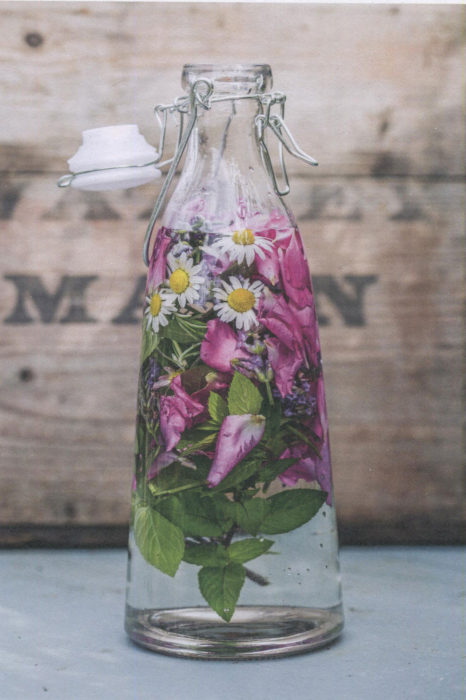
There was a time when many, if not most, Americans had home gardens. Serious gardens in some cases, where a good amount of the food supply for the year was carefully fathered. Seeds were sown, the plants watched over and watered and weeded.
Not many of us do that anymore. But we should. Now, the word “botanicals” can be a bit foreboding. I grew up with gardens but my skills stopped with knowing the difference between tomatoes and lettuce. Suzi has far greater skills and we have a decently large herb garden upstate. Herbs, not food products. It’s a weekend house and we just cannot defeat the rabbits, possums and other critters in our garden.
In fact, last week we came up and started looking at our recently planted parsley patch, which we had netted to protect it from the deer. Suzi was examining each plant and her eyes were focused one plant at a time. I had a larger perspective. I saw the new “log” in the garden. Well, not a log. It was a fawn that had snuck under the netting.
Suzi got to the fawn. She’s a nice Jewish girl from Brooklyn. I had no idea she knew so many Anglo-Saxon words. The fawn stopped fawning, rose up, and darted away. I made the netting better.
Now, I may have to make the netting, the entire bed, bigger. Grown Your Own Botanicals inspires you to grow plants to improve your life: homemade drinks, remedies and skincare are benefits these plants can provide you.
The book opens with fifty pages on how to do this: tips for a small garden, soil preparation, worms, watering, how to plant, how to plot, using containers or raised bed, growing on a balcony [for the really small], how to make tisanes [herbals teas], how to make booze, and how to make beauty products.
That intro arms you all the information you need to begin. Oh, there is just one more step: what to grow. That is where Botanicals becomes a wonderful encyclopedia. There are three major sections here: Flowers and Shrubs, Herbs and Spices, Fruit and Vegetables. Whether you want scents and colors, or flavor for your food, or real food from fruits and veggies, you are presented with precise one-page discussions of almost a hundred candidates.
There are pictures for each plant, so you get a sense of visual impact each plant might have for your garden or porch or, yes, even that balcony. I had never imagined what Wasabi looked like, but is a lovely low and wide leaf. The discussion for each plant can come with surprises. That wasabi has some health benefits: it is good for arthritis and pain in the joints and it can clear your clogged sinuses [something you may have discovered at your local Japanese restaurant].
Many of the plants here you know about, but there is a cluster of ideas — this is a British book reflecting the diversity of those famed English gardens — that may inspire you:
Electric Daisy
Marsh Mallow [for tea]
Sweetfern [tea for headaches]
Lovage [for stews, sauces and soups]
Stevia [bright small white buds that help to lower blood sugar]
Samphire [a spikey plant you nibble on for its salty taste]
Chilean Guava [berries for jam or snacking]
If you want diversity in your garden, and on your plate, then Grow Your Own Botanicals will have you occupied through the growing season — and enjoying the products year round. If you love to garden, or if you’ve been thinking about it but never started, Botanicals is a thoroughly informative and flavorful guide.
Oh, you don’t have to eat, drink, chop or rub these botanicals. You can just enjoy their beauty:

